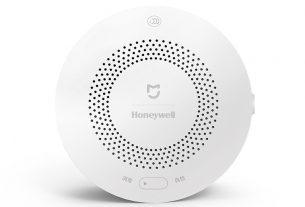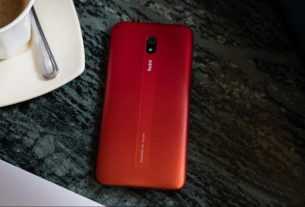The ASUS ZenFone Max Pro M1 features face unlocking and fast charging. The ZenFone Max Pro M1 may seem dull and soft at first glance, but considering the size and overall packaging of the display, it feels comfortable and feels comfortable. The button position is very good, a little harder, but considering the price of the phone, it feels good.
ASUS even managed to stuff it into this package with a huge 5000 mAh battery, considering that the phone’s thickness is only 8.5 mm, which will confuse you. The phone is not all-metal, the frame of the phone is made of polycarbonate, but it is really strong enough to handle several hits without any problems. The sleek design prospects also have a very curved overall structure that is separate from ASUS’s universal design language. It helps to grasp in many ways. It’s not the lightest cell phone of 180 grams, but a bigger battery does prove that the weight is reasonable. The back of the phone is equipped with an ASUS brand in the middle and a fingerprint scanner on the top. When Asus was lying on the table, he left ASUS with a camera to get a good typing experience.
The ASUS ZenFone Max Pro M1 features a 5.99-inch FHD+ display with an aspect ratio of 18:9. Under the hood, the phone is powered by the Snapdragon 636 SoC, which includes the Adreno 509 GPU. The phone has three models, 3 GB RAM + 32 GB storage, 4 GB RAM + 64 GB storage, and finally 6 GB RAM + 64 GB storage. On the software side, the phone runs on Android Oreo 8.1.
In the camera department, this phone features a dual camera setup with 13 MP sensor and 5 MP sensor. The front camera is an 8 MP unit. There is also a rear fingerprint sensor above the ASUS logo. In terms of connectivity, the phone has dual SIM slots, at least one of which supports 4G VoLTE. Fortunately, you have three slots, so you can use two SIM cards and one microSD card. The entire setup is powered by a large 5,000 mAh battery and supports fast charging. In addition to the fingerprint scanner, ASUS also introduced a face unlocking function that supports software.
The display is undoubtedly one of the biggest advantages of the ZenFone Max Pro M1. It is clear and bright even in direct sunlight, perfect for watching videos or playing games. The 5.99-inch IPS LCD does not move too much color when viewed from different angles, and there are no obvious signs of backlight bleeding. On paper, ASUS says the display has a pixel density of 403 PPI, but in my experience it is as clear as any other premium LCD on the market. The contrast level is just right, the color is vibrant, and the saturation doesn’t exceed the top. It certainly can’t compete with OLED panels, but in terms of price, it is definitely good. If you like, ASUS can really adjust the white balance.
Compared to Redmi Note 5 and even Note 5 Pro, ZenFone’s display is not better, but it can be said that it will outperform all other displays in the price range of 15,000 rupees. If you must have a category, you can really choose the fault of the ASUS ZenFone Max Pro M1, then it must be a camera. The ZenFone Max Pro M1 features a dual camera setup on the back and a 130,000-pixel camera with af / 2.2 aperture supported by a 5 megapixel camera with f / 2.4 aperture. On the front, you will get an 8 MP selfie camera.
When shooting in the right light, shooting during the day is good, but there is a tendency to over-saturate the color, causing the shot to be darker than expected. These photos are pleasing in other respects, and the sharpness level is comparable to the Redmi Note 5 Pro. The camera interface is easy to get started and starts shooting. Asus has invested in a variety of dedicated shooting modes, including – HDR, portraits, landscapes, sports, flowers, candlelight, sunsets, beaches and even night modes. While most are patterns you won’t find yourself, HDR and night mode still seem to work. Although daylight shooting is more or less comparable, ZenFone’s true loss to Redmi Note 5 and Note 5 Pro is low light.
Most lenses have significant noise and significant color loss. Night mode can keep the shutter for a while, but you still have a hard time getting any good shots. After the last software update, the performance of the 8 MP front camera improved, but still unable to click on impressive selfies. Even in bright lighting conditions, the photos are average. When shooting with the rear and front cameras, the portrait mode separates the subject so you can shoot well there. But again, the ZenFone Max Pro M1 is just flat compared to the photos taken with the Redmi Note 5 Pro. In most cases, these images are comparable to the images of Glory 9 Lite, but if you are a photography enthusiast, be sure to try Note 5 Pro before making a decision.
For video recording, the phone is capable of shooting 4K at a maximum resolution of 30 fps. However, shooting in this situation, due to lack of stability, you tend to lose a lot of detail. ASUS also lets you mute while shooting, which can be convenient in some situations. The ASUS ZenFone Max Pro M1 creates all the boxes for the competitors of Xiaomi Redmi Note 5 Pro and Honor 9 Lite. Well, it doesn’t outperform Honor 9 Lite in terms of pure appearance, nor does it make the cost of the Note 5 Pro camera to pay for it.
In terms of overall value, Asus has not been hit. You’ll get an excellent 18:9 display, great gaming performance, a relaxed and simple software experience and two days of battery life. The only downside is its camera performance and overall look. But if you are a person who can surpass these two doubts, then there is no more than ZenFone Max Pro M1. Finally, the choice is very simple, if you are looking for a replacement for Redmi Note 5 Pro, for whatever reason, ZenFone Pro Max M1 is definitely worth recommending.




This site really has all the information, thanks for sharing…. please join us at